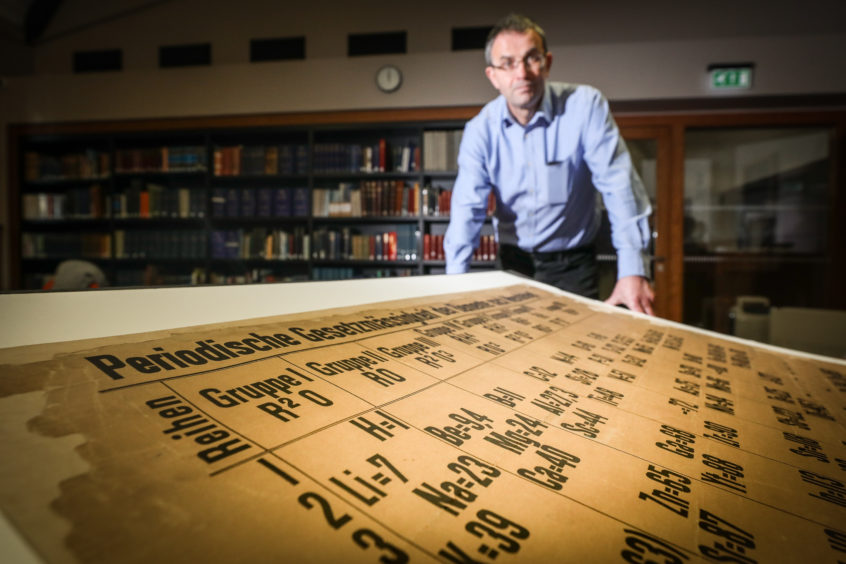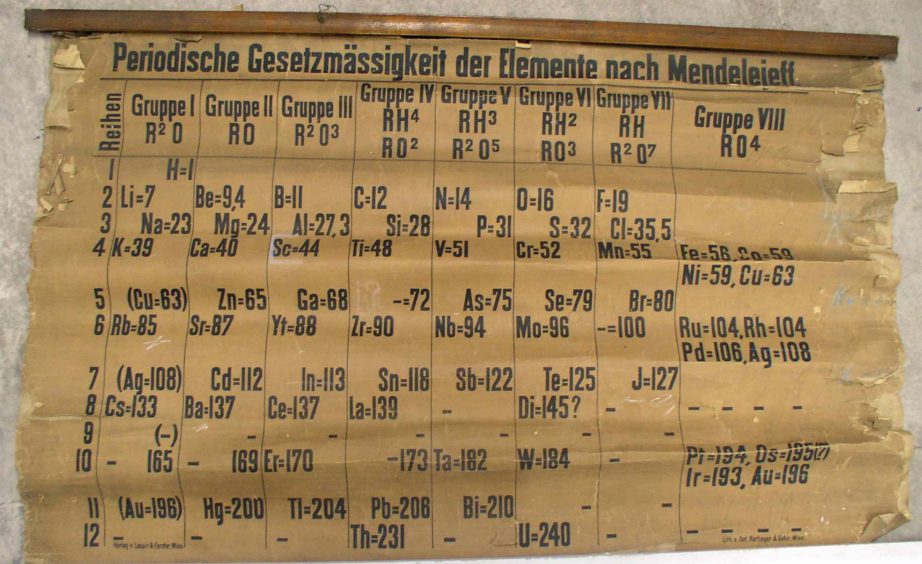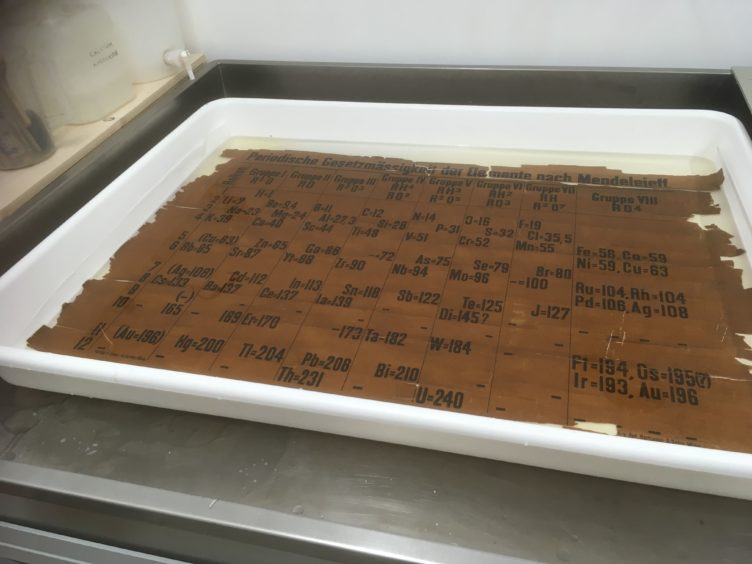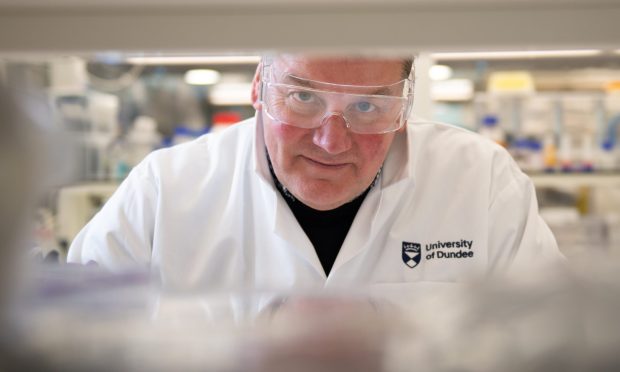What is thought to be the oldest periodic table chart in the world has been discovered at St Andrews University.
The chart of elements, dating from 1885, was discovered in School of Chemistry in 2014 by Dr Alan Aitken during a clear out.
The storage area was full of chemicals, equipment and laboratory paraphernalia which had accumulated since the opening of the chemistry department’s current location in 1968.
Following months of clearing and sorting the various materials a stash of rolled up teaching charts was discovered.
Within the collection was a large, extremely fragile periodic table that flaked upon handling.
Suggestions that the discovery may be the earliest surviving example of a classroom periodic table in the world meant the document required urgent attention to be authenticated and restored.
Dmitri Mendeleev made his famous disclosure in 1869 and the newly unearthed table was similar, but not identical, to Mendeleev’s second table of 1871.
However, the St Andrews table was clearly an early specimen.
It is annotated in German, and an inscription identifies a scientific printer who operated in Vienna between 1875 and 1888.
Another inscription identifies the chart’s lithographer, who died in 1890.
Working with the special collections team, the university sought advice from a series of international experts.
Following further investigations, no earlier lecture chart of the table appears to exist.
Professor Eric Scerri, an expert on the history of the periodic table based at the University of California, dated the table to between 1879 and 1886 based on the elements.
Meanwhile St Andrews’ researcher, M Pilar Gil, found a receipt recording the purchase of an 1885 table by Thomas Purdie from the German catalogue of C Gerhardt of Bonn for the sum of 3 Marks in October 1888.
Coming from the chemistry class expenses for the 1888 to 1889 session, it appears to confirm its provenance.
Mr Purdie was professor of chemistry from 1884 until 1909 and, as a new professor, would probably have wanted the latest teaching materials.
This table appears to be the only surviving one from this period across Europe.
The university is now keen to know if there are others that are close in age, or even predate, the St Andrews table.
Former head of chemistry Professor David O’Hagan, said the discovery of the world’s oldest classroom periodic table was “remarkable”.
Head of special collections Gabriel Sewell added: “We are delighted that we now know when the oldest known periodic table chart came to St Andrews to be used in teaching.”












